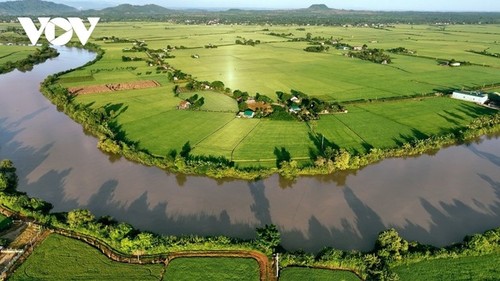 Choah village rice field in the Central Highland province of Dak Nong has been created from both volcanic eruptions and alluvial deposits over centuries. Choah village rice field in the Central Highland province of Dak Nong has been created from both volcanic eruptions and alluvial deposits over centuries. |
B: Commenting on our story about Vietnam’s 10‑year participation with the UN peacekeeping mission, Johnny Ramirez Lopez of Peru wrote: “Vietnam is a great champion of world peace. After reading this important journalistic article that VOV shared with the world, I established deep feelings of gratitude for such laudable efforts made by the Vietnamese army and volunteers in order to cooperate and establish well-being with the human communities that need it. With all sincerity, Thank you Vietnam!”
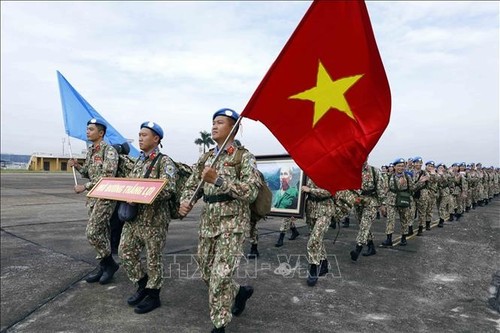 The Vietnamese peacekeeping force departs at Noi Bai International Airport for the UNISFA mission on August 8, 2023. (photo: An Dang/VNA) The Vietnamese peacekeeping force departs at Noi Bai International Airport for the UNISFA mission on August 8, 2023. (photo: An Dang/VNA) |
A: May 27th, 2024 marked a decade since Vietnam first sent forces to participate in a UN peacekeeping operation. Over the past 10 years, Vietnam has sent over 800 officers and soldiers, including 7 officers of the Vietnam Public Security Force, to engage in 4 peacekeeping missions in the Central African Republic, South Sudan, Abyei, and the UN headquarters.
B: Vietnam has been appreciative for international friends’ joining our effort for peace, stability, cooperation, and development around the world. Again, thank you, Mr. Lopez for your regular feedback on our programs.
A: In a letter to VOVWorld this week, Liana Safitri shared his interest in our stories about the heroic soldiers of the Dien Bien Phu campaign 70 years ago.
B: Joan Coba Femenia of Spain wrote: “I really find it interesting to listen to your program. Thank you for everything. I wish you much success and send you cordial greetings from Spain.”
A: Diego Echeverri of Colombia wrote that he really enjoys listening to VOV programs, and the wonderful “Letter Box” which he says makes the “Voice of Vietnam” one of the most loved international radio stations. “I recently talked to the mayor of the town where I live about my love for the Voice of Vietnam, and he also expressed interest in this topic,” he wrote.
B: Thank you, Echeverri, Femenia, and Safitri for sharing your love for VOV and Vietnam. We hope to continue to receive your feedback and welcome you all in Vietnam. Why not?
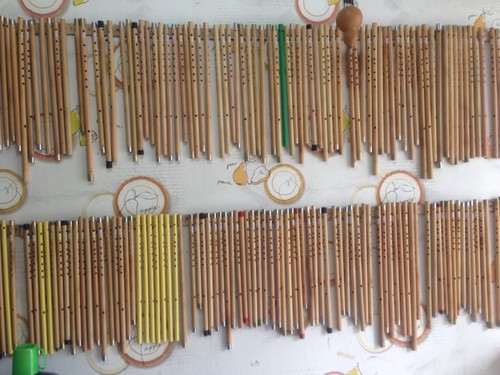 Vietnamese bamboo flute (Photo: Ha Ngan) Vietnamese bamboo flute (Photo: Ha Ngan) |
A: From Okayama, Japan, Uemura Akio wrote: “I happened to hear a piece of music that was a traditional Vietnamese musical instrument, apparently called a bamboo flute. I found the sound very lively and clear, and just by listening to the sound I could guess that it was a Vietnamese musical instrument. It’s strange, but I have a very familiar feeling when listening to such instruments. If I have the opportunity, I will travel to Vietnam and visit your traditional musical instrument displays.”
B: Yes, you’re much welcome to visit Vietnam, Akio, and explore the country’s rich culture as well as its diverse musical instruments.
A: The Vietnamese bamboo flute has long been one of the most popular wind instruments, containing the essence of Vietnamese music. The moody sound it produces has reflected the spiritual life of the Vietnamese people since long ago.
B: Currently, the bamboo flute remains a prominent musical instrument performed solo or together with other instruments in traditional Vietnamese orchestras as well as in modern music.
A: The Vietnamese bamboo flute was particularly popular in the countryside, possibly because bamboo grows widely in rural area.
B: The Vietnamese bamboo flute is generally made from a single piece of bamboo, so, choosing the appropriate bamboo tube is the most crucial part of flute making. According to flute making artisans, the process of selecting the bamboo and manufacturing the flutes is the most difficult part. 3 to 5-year-old bamboo is the best material.
A: Bamboo tubes with a suitable diameter are cut down and left to dry in the sun for a day. Then they are boiled to kill termites and dried again until the bamboo tubes become tough and turn yellow. After that, sandpaper is used to polish the bamboo tube’s surface. Curved bamboo tubes need heat to be reshaped into straight tubes.
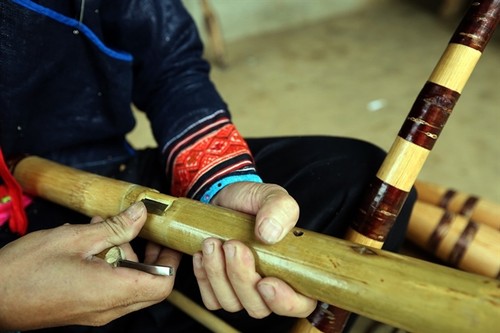 he Vietnamese bamboo flute was particularly popular in the countryside, possibly because bamboo grows widely in rural area. he Vietnamese bamboo flute was particularly popular in the countryside, possibly because bamboo grows widely in rural area. |
B: A bamboo flute’s length varies between 40 and 55 centimeters. It measures just around 1.5 to 2 centimeters in diameter. The flute’s thickness is among the key elements determining the timbre or ‘tone color’ it produces. Flutes with thick walls tend to have a darker sound quality, because they require more force to vibrate the bamboo. Meanwhile thin-walled flutes often produce a brighter sound.
A: Since the early days of Vietnamese orchestras, the bamboo flute has been one of the essential instruments played in Cheo (popular theater), Cai Luong (reformed theater), and Chau Van (ceremonial singing).
B: The bamboo flute is not only used in Vietnam traditional music, but also in modern music. It can replace the Western flute with its amazing sound production.
A: The Vietnamese bamboo flute has recently been played in ensembles with electronic dance music (EDM) and received positive feedback from young audiences and listeners. This proves the vitality of this type of flute, since it has gone beyond traditional music to be played in the trendiest music, like EDM.
B: You’re listening to our weekly “Letter Box” on the Voice of Vietnam. This week Michael Lindner of Germany wrote to us and asked about the Military History Museum in Vietnam.
A: The Vietnam Military History Museum Hanoi, also known as the Army Museum, is home to an extensive collection of weaponry that was used throughout Vietnam’s history.
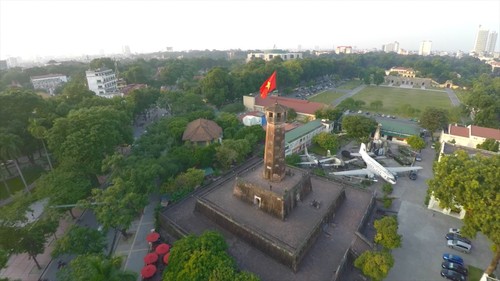 An overview of the Vietnam Military History Museum An overview of the Vietnam Military History Museum |
B: Established in 1956, the museum is not only one of the seven museums at the national level but also the headquarters of the army museum network.
A: Located in central Hanoi, the Military History Museum is just 600 meters east of President Ho Chi Minh’s Mausoleum and spans a 10,000-square-meter area.
B: This museum is not only one of the seven national museums but also serves as the headquarters of the army museum system. Its exhibitions chronicle Vietnamese military history from the country’s founding through the Ho Chi Minh era.
A: One notable landmark on the museum grounds is the Hanoi Flag Tower, recognized as a national historic cultural monument. Constructed between 1805 and 1812, the tower stands nearly 31 meters tall and has a circumference of 180 meters.
B: Visitors to the museum can view thousands of exhibits, including photographs, maps, and scale models from the war. These displays provide a comprehensive overview of the development and triumphs of the Vietnamese armed forces in their quest for peace, independence, and freedom for the country.
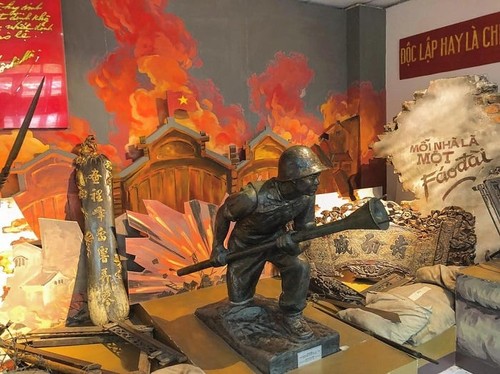 At the Vietnam Military History Museum At the Vietnam Military History Museum |
A: Today, the Vietnam Military History Museum is open to all visitors, and attracts a lot of foreigners.
B: Meanwhile, in Ho Chi Minh City, you can check out the War Remnants Museum which Travel Weekly Asia lists among the world’s top 99 best tourist attractions. Ranking 61st, the War Remnants Museum is the only Vietnamese representative named in the list.
A: Located at 28 Vo Van Tan street in District 3, the War Remnants Museum covers an area of 7,300 square meters. It features both indoor and outdoor exhibition areas, displaying the devastation of the war between Vietnam and the United States from 1961 to 1975.
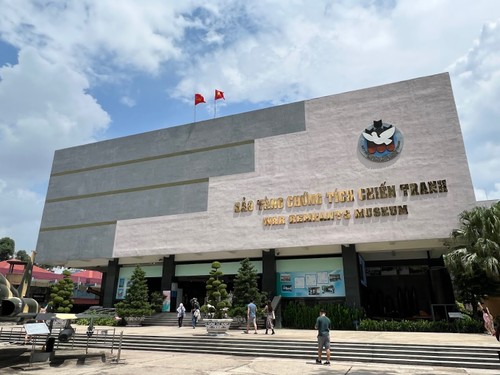 War Remnant Museum in Ho Chi Minh City War Remnant Museum in Ho Chi Minh City |
B: The museum is comprised of several buildings storing military equipment, as well as disturbing photographs about the traumatizing consequences of Agent Orange, napalm, and phosphorus bombs.
A: This week, VOVWorld received many questions from our listeners but within our timeframe for the “Letter Box”, we can’t answer them all. But we promise to deliver related stories in our next programs. So keep tuning in to VOV.
B: The English Service, VOVWorld, the Voice of Vietnam, is located at 45 Ba Trieu Street, Hanoi, Vietnam. Or you can email us at englishsection@vov.vn. You’re also invited to visit us online at vovworld.vn.
A: You can also check out our VOV Media App, available on both the IOS and Android platforms, to hear our broadcasts. Once again, thank you all for listening. Goodbye!